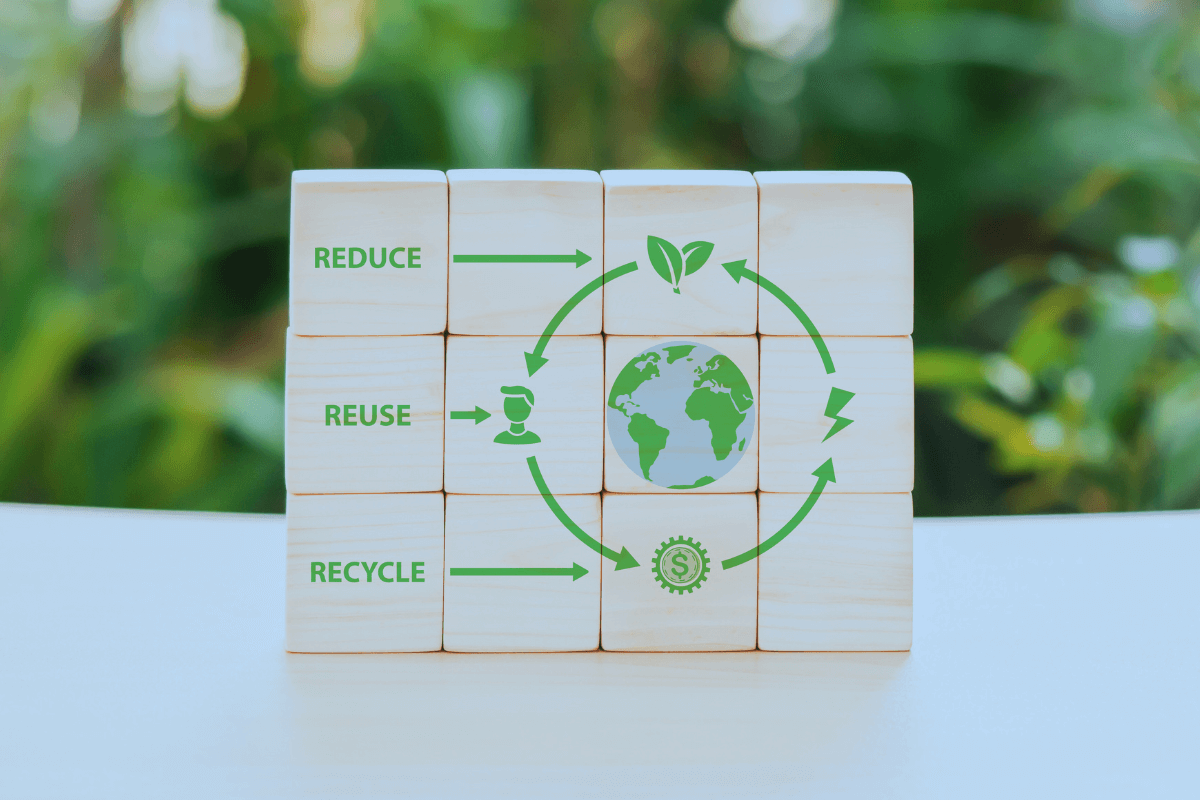
A Sustainable Model for the Future
The future knows no waste because every product begins a new life as soon as it has fulfilled its original purpose. Sound utopian? Welcome to the circular economy – a model designed to conserve resources and minimize waste. This is especially crucial in the IT sector, where e-waste continues to grow. But what exactly is the circular economy, and what benefits does it offer businesses?
Unlike the linear economy, which follows the principle of “Produce – Consume – Dispose,” the circular economy focuses on “Reduce – Reuse – Recycle.” The goal is to close production and consumption loops to reduce environmental impacts and conserve natural resources. For businesses, this represents a strategic decision that is both ecologically and economically sensible.
Benefits of the Circular Economy for Businesses
How can impending resource shortages be avoided? Currently, only about 10% of all production materials in Germany come from recycled sources[1]. Increasing this share to 50% could help avert resource scarcity. Companies that embrace recycling secure their raw material supply for the long term and operate more profitably. By reprocessing and reusing raw materials, production becomes more efficient, the demand for new resources decreases, and waste and disposal costs are reduced. This lowers total energy consumption and increases profitability.
Old devices stored in basements or drawers can be valuable raw material sources. Companies tapping into these resources gain self-sufficiency and availability. The circular economy also helps reduce CO2 emissions. In Germany alone, 2.4 million tons of CO2 could be saved annually if devices were reused instead of discarded[2].
The Role of IT in the Circular Economy
Digital transformation has made IT one of the key drivers of economic development, further increasing the demand for resources. The production and disposal of electronic devices are becoming an environmental challenge. Therefore, the call for implementing the circular economy is growing, especially in the IT industry. Innovations like artificial intelligence (AI) and the Internet of Things (IoT) are pushing IT expenses even higher. Yet, these innovations are also part of the solution for successfully implementing the circular economy.
The importance of refurbishing outdated hardware and recycling essential raw materials is growing. Through appropriate actions, the IT department can make significant contributions to savings and, thus, to the overall success of the company. Ultimately, the aim is to reduce the mounting e-waste and minimize the ecological footprint for the sake of our climate. Sustainably used IT devices are the key to achieving this.
Challenges and Uncertainties in Implementation
Despite the many benefits, there are also challenges in implementing the circular economy. Transitioning from a linear to a circular economy often requires high initial investments, which can be discouraging. Organizing and optimizing circular processes require comprehensive and well-thought-out logistics. Additionally, many companies are unclear about the legal requirements and guidelines for the circular economy, further complicating its implementation.
Despite these uncertainties, the long-term advantages of the circular economy outweigh the drawbacks. It is becoming an indispensable part of sustainable business practices. The circular economy is already legally enshrined, as shown by the German Circular Economy Act. However, implementation is progressing slowly. Linear thinking and the seemingly lower costs of the old economic model hinder a quick transformation. To build a sustainable future, politics, business, and private households must work together. Shifting to a circular economy may be challenging, but it is the only way to achieve ecological and economic goals and establish a resource-saving economy. The circular economy is not just an option but a necessity. Businesses that embrace this path will benefit in the long run and make a significant contribution to sustainability.
[1] CIRCelligence by BCG, It’s Time to Close Our Future Resource Loops, Holger Rubel, Alexander Meyer zum Felde, Jan Oltmanns, Carolin Lanfer, and Lena Bayer, Juli 2020, S. 4
[2] Reparieren statt Wegwerfen, Eine Studie im Auftrag der WERTGARANTIE SE zur Entstehung von Elektroschrott, 2022/2023, S. 3